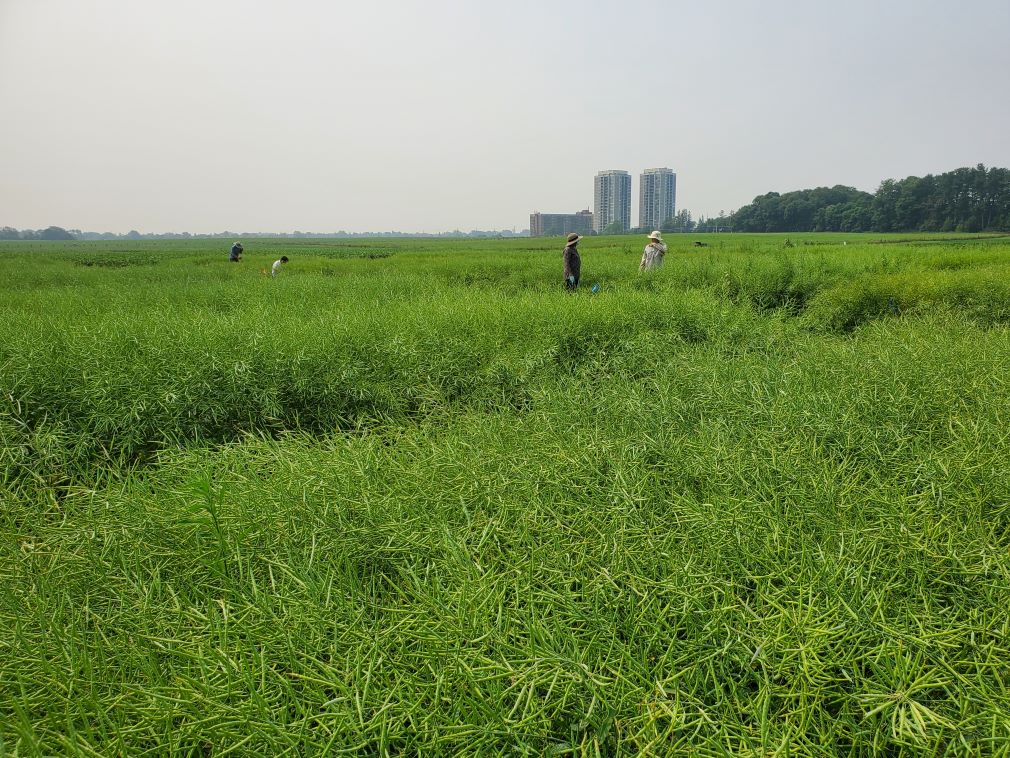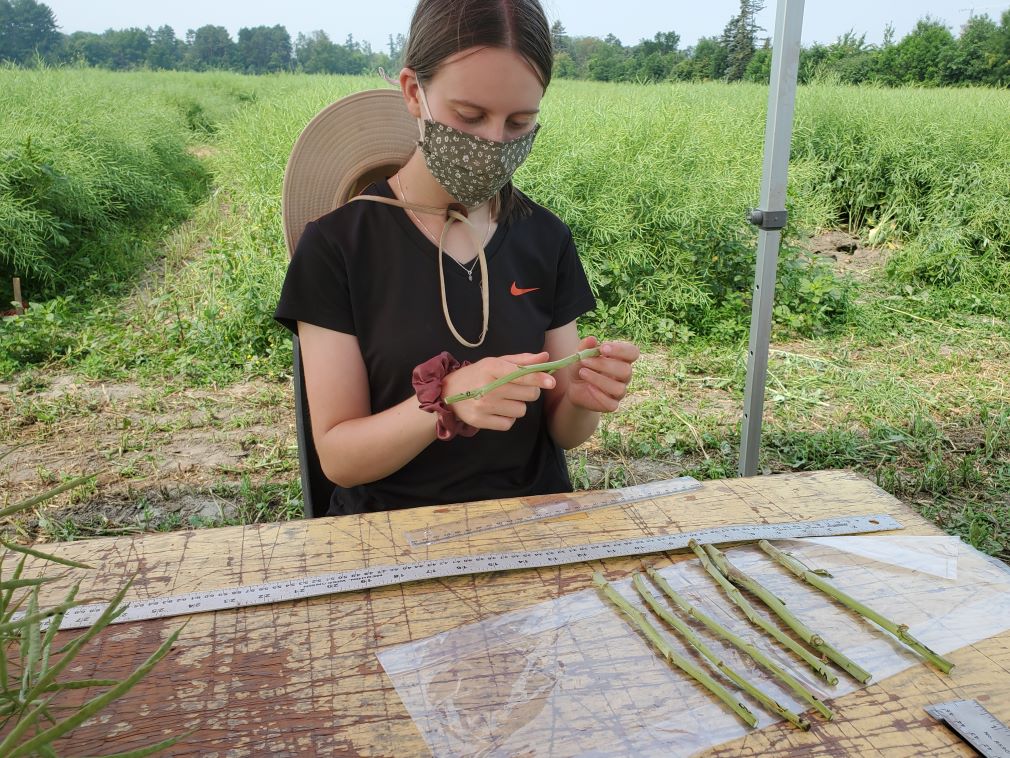Key Result
Recommendations from this large study include apply 130-147 lb./ac. of nitrogen in the Black soil zone and 76-89 lb./ac. in the Brown soil zone. This is a balance between canola yield, nitrogen use efficiency (NUE) and maximum economic returns.
Project Summary
Overview
The purpose of this research was to develop best management technologies to promote canola productivity, profitability as well as sustaining the environment.
Researchers investigated the critical roles of root architecture in nutrient absorption, root anchorage strength (involved in lodging resistance) and genotypic variations. They identified and employed soil and plant diagnostic tools to improve NUE and yields of canola and to promote soil and environmental sustainability.
This study includes two field experiments at eight locations across Canada and laboratory analysis.
Field sites were at Ottawa in Ontario, Carman and Brandon in Manitoba, Scott, Melfort and Swift Current in Saskatchewan, and Olds and Beaverlodge in Alberta.
Objectives
The specific objectives are to:
(1) assess agronomic and economic responses of canola to nitrogen fertilizer management in terms of nitrogen use efficiency (NUE), yield and crop standability.
(2) improve NUE, crop productivity and lodging resistance through management practices under different soil and cropping system conditions.
(3) identify root architecture traits for efficient nitrogen acquisition and strong anchorage strength.
(4) investigate the taxonomic and functional response of the soil microbiome to nitrogen management.
Results
Based on field data, researchers found that when seed yield was greater than 1.3 tonnes per hectare (t/ha) and aboveground biomass was greater than 4.0 t/ha, it was negatively correlated with safety factor of the stem and the root. In other words, higher yields reduce stem and root safety – which increases the lodging risk.
Under low-yielding conditions, split nitrogen treatments did not always show advantages over the equivalent preplant-only nitrogen treatments in terms of lodging resistance and seed yield. Whereas higher seed yields were generally attained under the split nitrogen application in all favourable environments.
Root electrical measurements and NDVI mapping can be used to predict lodging susceptibility, due to their low cost and non-destructive properties.
Using the Gini Importance Index, weather conditions (heat and drought) are identified as the most limiting factor for canola yield, followed by soil texture, and nitrogen management.
Researchers found they could more accurately predict canola yield with the random forest regression (RF) model. Applied at the four- to six-leaf canola stage, this model, which includes all available soil, weather and plant growth features, had the best performance and explained 85 per cent of the variability in canola yield from the test dataset. In contrast, the NDVI-based single-feature random forest model showed a much higher relative error. The model based on SPAD chlorophyll readings also underperforms.
Heat-stress days and rainfall distribution during the four-week period bracketing flowering largely determined the canola responses to nitrogen fertilization.
Results suggest that drought and heat stress can be managed through breeding for superior stress-tolerant canola genotypes and implementing agronomic solutions to mitigate stress, protect yield potential, and reduce the greenhouse gas emissions from fertilizer use.
Researchers recommend applying 145-165 kg/ha (130-147 lb./ac.) of nitrogen in the Black soil zone, 85-100 kg/ha (76-89 lb./ac.) in the low-yielding Brown soil zone, and 140 kg/ha for eastern Canada, preferably as a split-application strategy. This rate considers the trade-off of canola yield and NUE with maximum economic returns.
Researchers found differences in nitrogen mineralization potential among sites, which affected canola response to nitrogen fertilization. Preliminary results also suggest that nitrogen fertilization may have a greater impact than crop rotation on potential nitrogen mineralization in the short term, and hence affect soil nitrogen supply capacity.
Preliminary data analyses led to the identification of temporal shifts in the functional capacity of the soil microbiome within a growing season in response to the rate and timing of nitrogen fertilization. Over the four years, researchers found that crop rotations had a stronger impact than nitrogen fertilization rates in shaping the composition of the soil microbiome and altering the potential nitrogen cycling processes mediated by the soil microbiome.
Researchers will use information from this study to prepare site-specific nitrogen management guides for the main and potential canola production regions. These guides will take into account climate conditions, soil and cropping systems specific to each ecosite.
Related publications
Optimizing nitrogen fertilization for hybrid canola (Brassica napus L.) production across Canada








